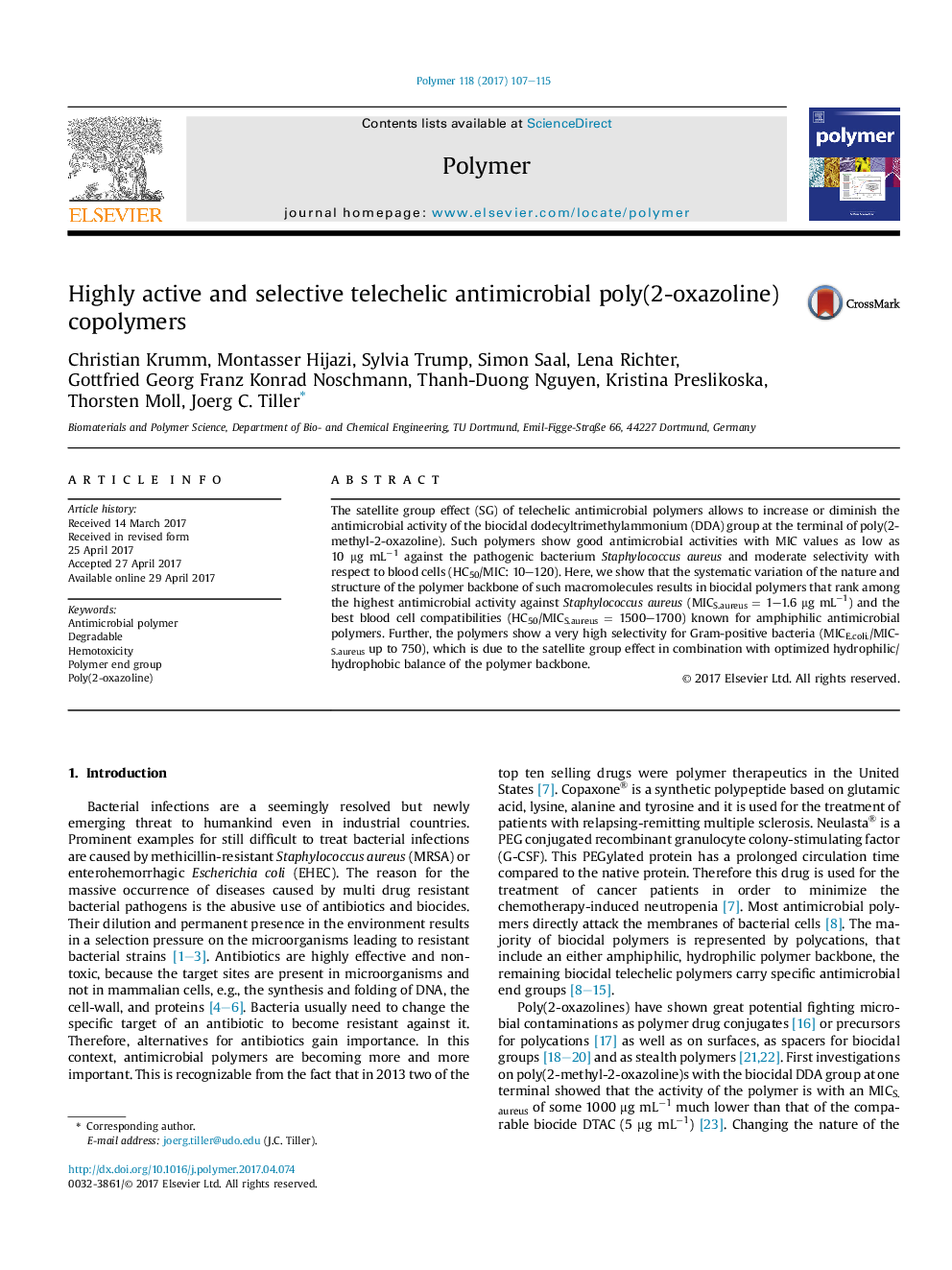| Article ID | Journal | Published Year | Pages | File Type |
|---|---|---|---|---|
| 5178046 | Polymer | 2017 | 9 Pages |
â¢Composition of the polymer backbone controls antimicrobial satellite group effect.â¢Best hydrophilic/hydrophobic balance (HHB) leads to highest known biocidal activity.â¢HHB is more important for antimicrobial activity than block structure.â¢Telechelic polymers exhibit high hemocompatibility.â¢Telechelic polymers show high selectivity towards S. aureus over E.coli.
The satellite group effect (SG) of telechelic antimicrobial polymers allows to increase or diminish the antimicrobial activity of the biocidal dodecyltrimethylammonium (DDA) group at the terminal of poly(2-methyl-2-oxazoline). Such polymers show good antimicrobial activities with MIC values as low as 10 μg mLâ1 against the pathogenic bacterium Staphylococcus aureus and moderate selectivity with respect to blood cells (HC50/MIC: 10-120). Here, we show that the systematic variation of the nature and structure of the polymer backbone of such macromolecules results in biocidal polymers that rank among the highest antimicrobial activity against Staphylococcus aureus (MICS.aureus = 1-1.6 μg mLâ1) and the best blood cell compatibilities (HC50/MICS.aureus = 1500-1700) known for amphiphilic antimicrobial polymers. Further, the polymers show a very high selectivity for Gram-positive bacteria (MICE.coli./MICS.aureus up to 750), which is due to the satellite group effect in combination with optimized hydrophilic/hydrophobic balance of the polymer backbone.
Graphical abstractDownload high-res image (210KB)Download full-size image
